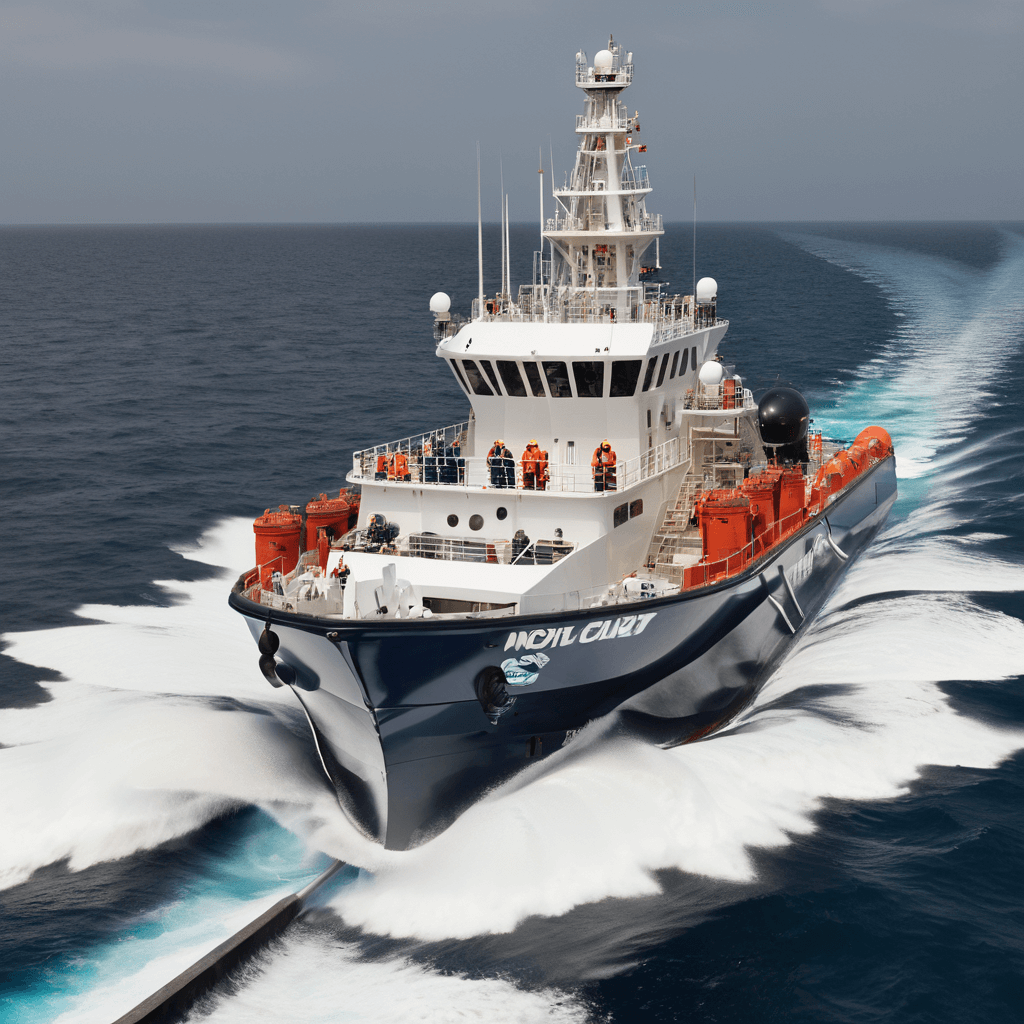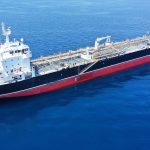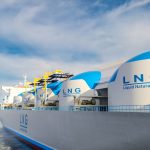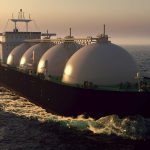

Navigating the Seas: The Role of Crew Boats in Offshore Oil & Gas Operations
Introduction
Crew boats, also known as Fast Supply Vessels (FSVs) or Fast Support and Intervention Vessels (FSIVs), are essential in offshore oil and gas operations, serving as vital links between onshore facilities and offshore installations. These specialized vessels are designed to transport personnel, essential supplies, and equipment, playing a key role in ensuring the smooth functioning of offshore activities. The main mission of crew boats includes:
⦁ Crew boats facilitate the rapid movement of crew, workers, and materials between the shore and offshore platforms, supporting continuous operations in remote areas.
⦁ They are crucial in maintaining the supply chain for offshore facilities, delivering fuel and water.
⦁ Additionally, crew boats provide various supplies necessary for sustained production, including equipment and containers, utilizing their vast deck space. This provides essential support for maintenance and construction work at sea, enabling specialized tasks to be carried out efficiently.
The reliability and efficiency of crew boats are crucial to the overall success of offshore oil and gas operations. Their ability to navigate challenging marine environments while prioritizing safety makes them indispensable assets in the industry’s pursuit of productivity and operational excellence.
The Importance of Crew Boats in Offshore Operations
The importance of crew boats arose as offshore companies looked for cost-effective alternatives to using helicopters to transfer personnel. While helicopters were beneficial in transporting personnel, their cargo-carrying capacity is limited. Crew boats gradually became the preferred option as their cost-effectiveness increased. Crew boats vary in size between approximately 30 meters to 50 meters, depending on the required passenger and cargo capacity.
⦁ Fast Transporting Personnel:
⦁ Crew boats primarily move workers and goods between land and offshore installations. They typically operate at speeds ranging from 25 to 30 knots, ensuring swift and convenient travel for crew and offshore personnel. Passenger capacities typically range from 50 to 100 individuals, depending on operational requirements and vessel design capabilities.
⦁ Delivering Liquid Cargo:
⦁ Crew boats help deliver essential liquid cargo, including fuel oil and potable water. Typical requirements include approximately 100,000 cubic meters of fuel oil and approximately 25,000 cubic meters of potable water for a 40-meter crew boat.
⦁ Delivery of Essential Supplies:
⦁ Crew boats play a critical role in supplying necessary machinery and equipment to keep remote platforms operational. They typically have a deck cargo carrying capacity of around 80 to 100 tons and deck areas of approximately 100 square meters, allowing for the transportation of equipment, machinery, and containers required by offshore platforms.
Ensuring Safety on Board Crew Boats
The safety of crew members on board crew boats is paramount in offshore oil and gas operations. Here are the key points to consider:
⦁ Importance of Prioritizing Safety:
⦁ Mitigating risks and protecting personnel is a top priority on crew boats to ensure smooth and secure operations.
⦁ Compliance with Regulations:
⦁ Upholding industry standards for a secure working environment is essential. Adhering to regulations ensures that safety protocols are in place and followed diligently.
⦁ Training and Qualifications for Crew Members:
⦁ Equipping crew members with the necessary skills to respond to emergencies is crucial. Proper training and qualifications enable them to handle unexpected situations effectively, ensuring the safety of everyone on board.
By prioritizing safety, complying with regulations, and providing adequate training, crew boats can maintain a secure environment for all personnel involved in offshore oil and gas operations.
Main Design Features and Equipment
⦁ Hull Type: Catamaran vs Monohull:
⦁ While most crew boats are monohull designs, catamaran hull crew boats are also common. Monohull designs offer higher tank capacity and deck cargo capacity, along with better seaworthiness and crew comfort in rough sea states. Catamarans offer higher stability, speed, and passenger carrying capacity.
⦁ Hull Material: Steel vs Aluminum:
⦁ While most crew boats are built with aluminum hulls for reduced weight and improved speeds, some operators still opt for steel hulls for better stability and seakeeping capabilities.
⦁ Length:
⦁ Crew boats typically range from 30 meters to 50 meters in length, with an average of around 40 meters. Longer boats generally offer better stability and higher speed potential but may have higher construction and operational costs.
⦁ Passenger Capacity:
⦁ Determining the passenger capacity depends on the boat’s intended use and regulations. Typical passenger capacities range between 50 to 100 personnel.
⦁ Speed
⦁ Most end-users prefer speeds of around 25 to 30 knots, depending on operational requirements.
⦁ Deck Cargo:
⦁ Design considerations include deck space, weight distribution, securing mechanisms, and the impact on stability and performance. A typical deck cargo space of approximately 100 square meters is common in an average crew boat size of 40 meters.
⦁ Tanks:
⦁ Cargo tank size depends on operation requirements. Typically, fuel oil requirements range from 60,000 to 100,000 cubic meters, while freshwater requirements range from 10,000 to 25,000 cubic meters depending on vessel size.
⦁ Propulsion System:
⦁ The majority of crew boats employ a propeller propulsion system; it’s common for crew boats to be designed with a triple-screw propeller propulsion system. In cases where speeds of 30 knots to 40 knots are required, some owners opt for waterjet propulsion systems for their efficiency in the aforementioned speed range.
Advantages of Utilizing Crew Boat Services for Maintenance and Construction Work
⦁ Increased Efficiency:
⦁ Crew boats provide a reliable and efficient means of transporting technicians, equipment, and tools for repairs, inspections, and other maintenance activities. They are specifically designed to navigate offshore environments, allowing them to reach remote platforms quickly.
⦁ Enhanced Productivity:
⦁ With crew boats readily available for transportation needs, offshore facilities can focus on their core activities without worrying about logistical challenges. By outsourcing transportation services to crew boats, companies can optimize their operations and allocate resources more efficiently.
⦁ Minimization of Downtime:
⦁ Crew boats play a vital role in ensuring that maintenance activities are carried out promptly by providing swift access to platforms. By reducing the time required for repairs or inspections, crew boat services help minimize downtime and optimize the operational efficiency of offshore facilities.
⦁ Cost-Effectiveness:
⦁ Compared to alternative methods such as helicopter transfers or using larger vessels, crew boat services offer a more cost-effective solution for maintenance support and marine construction projects. Crew boats have lower operating costs and provide a flexible option for transporting personnel and equipment.
Future of Crew Boats in the Offshore Industry
As the offshore oil and gas industry continues to evolve, so does the technology and capabilities of crew boats. Advancements in crew boat technology are being developed to meet the ever-changing needs of the industry, ensuring efficient and safe offshore operations.
Potential Advancements and Developments:
⦁ Design and Efficiency:
⦁ Crew boats may undergo design modifications to enhance their efficiency and reduce fuel consumption. Improved hull designs, propulsion systems, and hybrid or electric power sources are some possibilities that can contribute to increased fuel efficiency.
⦁ Automation and Remote Operations:
⦁ The integration of automation technologies may enable remote monitoring and control of crew boats, reducing the need for constant human presence onboard. This can improve operational efficiency and safety while reducing costs
⦁ Safety Features:
⦁ Continued focus on safety measures is expected, with the implementation of advanced safety systems such as collision avoidance technologies, improved emergency response equipment, and enhanced fire suppression systems.
⦁ Environmental Sustainability:
⦁ Crew boats may adopt eco-friendly practices such as the use of low-emission engines or alternative fuels. Additionally, efforts to minimize waste generation and improve waste management systems may become more prevalent.
Importance of Innovation for Sustainability and Growth
Innovation plays a crucial role in ensuring the sustainability and growth of the crew boat sector in the offshore industry. By embracing new technologies and practices, crew boat operators can:
⦁ Enhance operational efficiency, resulting in cost savings for offshore facilities.
⦁ Improve safety standards by implementing advanced safety features.
⦁ Minimize environmental impact through the adoption of eco-friendly solutions.
⦁ Stay competitive by meeting evolving industry demands with innovative solutions.
By investing in research and development, collaboration between industry stakeholders, and leveraging emerging technologies, the future of crew boats in the offshore industry looks promising. These advancements will contribute to more efficient and sustainable offshore operations, supporting the overall growth and success of the industry.
The continuous development of crew boat technology will enable offshore oil and gas operations to be conducted more safely, efficiently, and sustainably. As the industry faces new challenges and opportunities, innovation will be key in ensuring that crew boats remain an essential component of offshore operations.
Chartering Crewboats
Chartering Crewboats involves several considerations to ensure the success and safety of maritime operations:
⦁ Passenger Capacity: Understand the amount of PAX requirement by the end user and ensure the vessel provides the required PAX amount to meet the charter requirement.
⦁ Speed: Speed is crucial for operators and end users, so ensure vessel speed can meet charterer requirements at approximately 90% MCR.
⦁ Liquid Cargo: Check the type and amount of liquid Cargo required by the end user and ensure that the minimum requirement is met.
⦁ Deck Cargo: Deck Cargo Space, Deck loading, and Deck Cargo tonnage requirements are typically specified by the charterer or end user. Ensure vessels meets this requirement
⦁ Confirm Compliance and Experience: Verify the Crewboat’s compliance with End-user operational requirements including compliance with safety standards and the crew’s expertise in specific operations.
Conclusion
Crew boats are an essential component of offshore oil and gas operations, performing various functions that contribute to the success and efficiency of these operations. These functions include transportation, support for maintenance and construction work, and crew transfer.
It is important to recognize the significant contribution of crew boats in the industry and to maintain a balance between technological advancements and safety measures. By embracing innovation, such as advancements in crew boat technology, the sector can meet evolving industry needs while ensuring the well-being and security of crew members.
So next time you see a crew boat navigating through the seas, remember the crucial role it plays in keeping our offshore operations running smoothly.
Related posts


LNG Tanker Valuation: What Influences the Sale Price?

Buy and Sell Offshore Vessels






